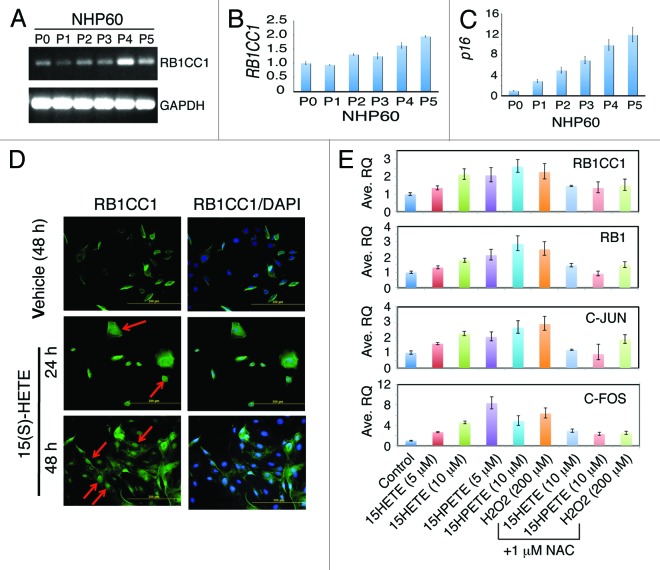Figure 7. Changes of RB1CC1 during NHP cell senescence and upon 15(S)-HETE treatment. (A and B) Increasing RB1CC1 mRNA levels in serially passaged primary NHP cells. NHP60 cells purified from benign prostate tissue and serially passaged were used in analysis of RB1CC1 mRNA by either regular RT-PCR (A) or qRT-PCR using ABI Biosystems Taqman assays (B). GAPDH PCR was used as controls. (C) qPCR analysis showing increasing levels of p16 mRNA in serially passaged NHP60 cells. (D) Induction of RB1CC1 in NHP60 cells by 15-LOX2 metabolite, 15(S)-HETE. NHP60 cells treated with 15(S)-HETE (5 μM) were immunostained for RB1CC1. Original magnifications, ×200. (E) 15-LOX2 metabolites (15[S]-HETE and 15[S]-HPETE) induce RB1CC1 and other related molecules in RWPE-1 cells. RWPE1 cells were treated with 15-LOX2 metabolites at the concentrations indicated and the mRNA levels of the indicated molecules were analyzed by qPCR. In some conditions, cells were pretreated with H2O2 (200 μM) or NAC (1 mM). Shown are the mean ± SD from 2 independent measurements.

An official website of the United States government
Here's how you know
Official websites use .gov
A
.gov website belongs to an official
government organization in the United States.
Secure .gov websites use HTTPS
A lock (
) or https:// means you've safely
connected to the .gov website. Share sensitive
information only on official, secure websites.
